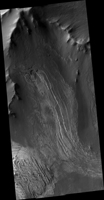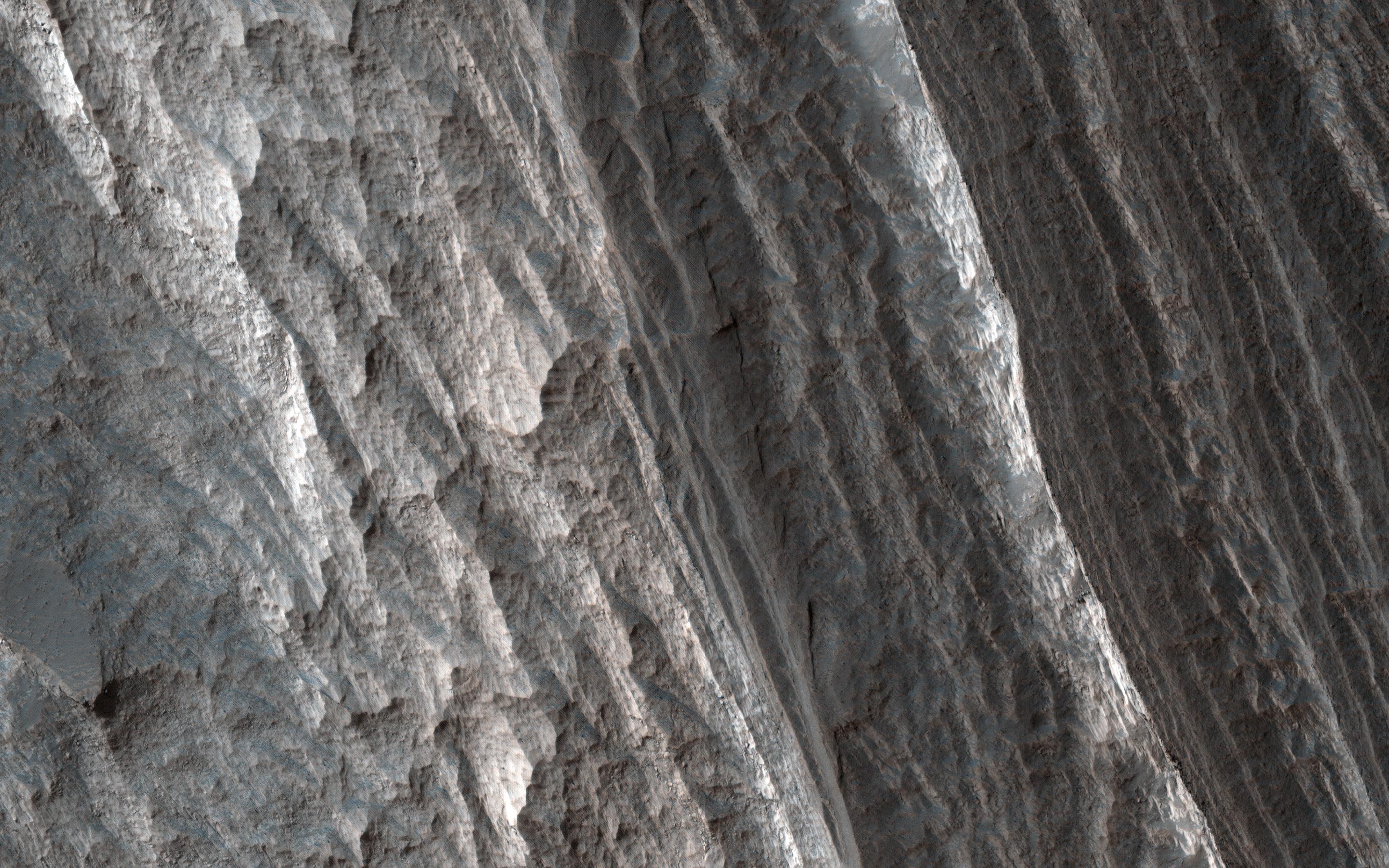Caption:

Map Projected Browse Image
Click on image for larger version
Light-toned layered deposits are found throughout central Valles Marineris. Most of the deposits tend to be towards the center of the depressions, away from the walls that define our solar system's largest canyon.
In this image of northwestern Candor Chasma, the light-toned layered deposits are adjacent to the walls. If the deposits are on top of the walls, then we know they were laid down after the chasma had already formed. However, if they are outcropping from within the walls, then they are older deposits that pre-date the chasma's formation.
Determining when the light-toned layered deposits formed is important for understanding the geologic history of Valles Marineris, especially because these deposits are hydrated and most likely formed in the presence of liquid water.
The map is projected here at a scale of 25 centimeters (9.8 inches) per pixel. (The original image scale is 26.6 centimeters [10.5 inches] per pixel [with 1 x 1 binning]; objects on the order of 53.3 centimeters [21.0 inches] across are resolved.) North is up.
Background Info:
The University of Arizona, in Tucson, operates HiRISE, which was built by Ball Aerospace & Technologies Corp., in Boulder, Colorado. NASA's Jet Propulsion Laboratory, a division of Caltech in Pasadena, California, manages the Mars Reconnaissance Orbiter Project for NASA's Science Mission Directorate, Washington.
Cataloging Keywords:
| Name |
Value |
Additional Values |
| Target |
Mars |
|
| System |
|
|
| Target Type |
Planet |
|
| Mission |
Mars Reconnaissance Orbiter (MRO) |
Mariner |
| Instrument Host |
Mars Reconnaissance Orbiter |
|
| Host Type |
Orbiter |
Flyby Spacecraft |
| Instrument |
High Resolution Imaging Science Experiment (HiRISE) |
|
| Detector |
|
|
| Extra Keywords |
Color, Map, Water |
| Acquisition Date |
|
| Release Date |
2021-09-29 |
| Date in Caption |
|
|
| Image Credit |
NASA/JPL-Caltech/University of Arizona |
| Source |
photojournal.jpl.nasa.gov/catalog/PIA24911 |
| Identifier |
PIA24911 |

 Planetary Data System
Planetary Data System

